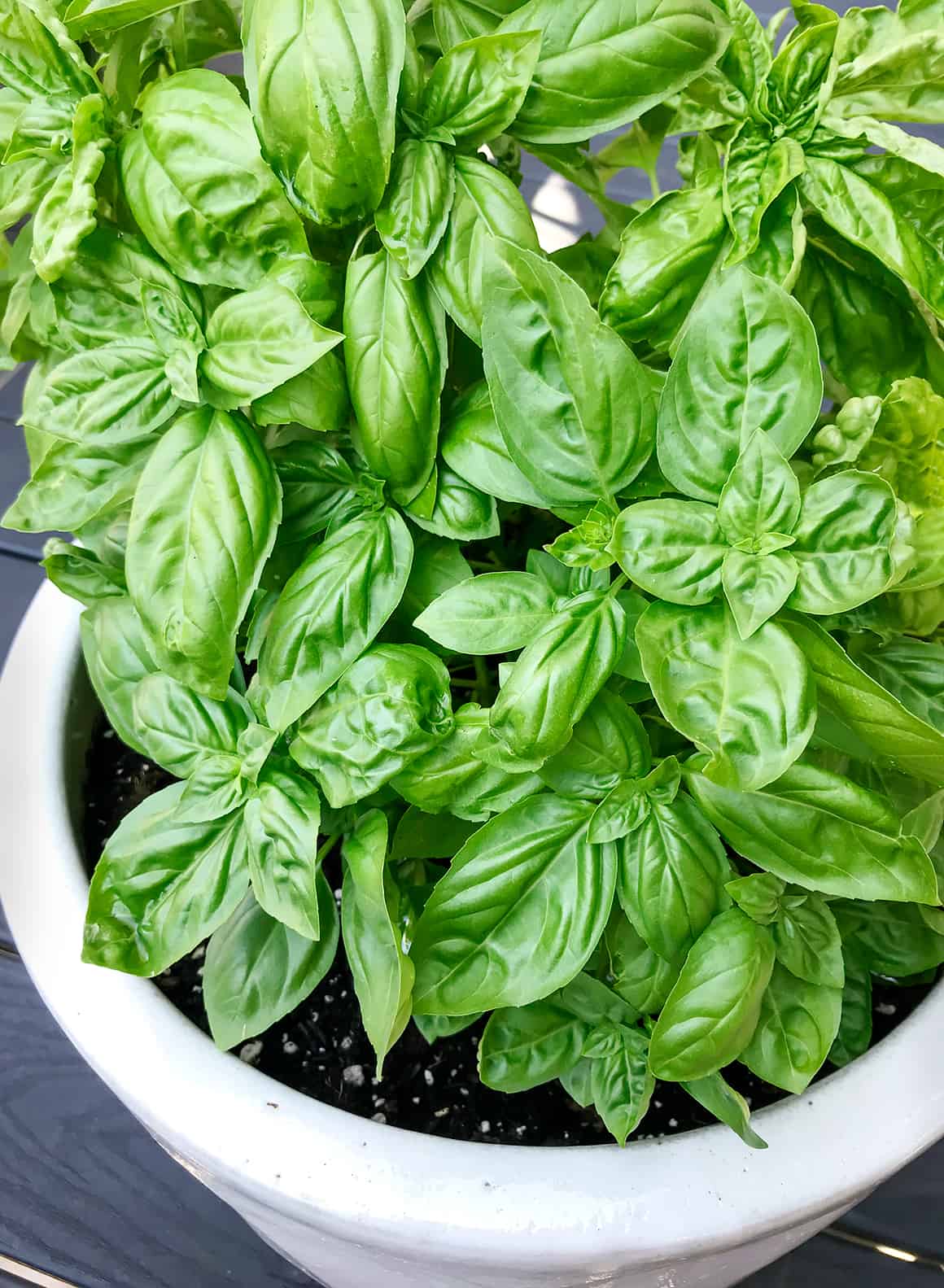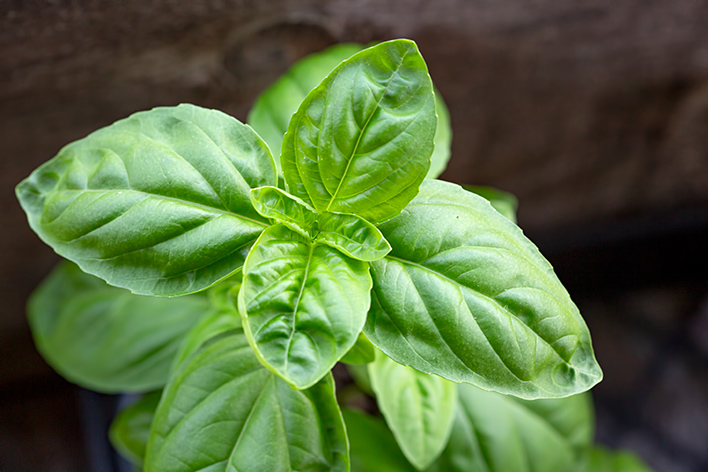Basil has long been a popular herb in both kitchens and backyard plants since who doesn’t enjoy a delicious salad or a pesto dish?
Due of how many leaves it has, it is my favorite herb to plant in the garden. If cultivated under ideal circumstances, it only requires minimal maintenance. What matters most is how much sun basil needs, though.
Basil needs at least 6 to 8 hours a day of direct sunlight to thrive. It can grow to their fullest capacity in soil that receives adequate sunlight and is kept moist but not drenched or dry.
It is advisable to harden these fragrant herbs to full sun as soon as the seedling has four leaves if you are growing them from seeds.
Now, read on to learn some frequently asked questions about basil and their related answers, like how much sunlight it needs.
Table of Contents
Does basil need direct sunlight?
Generally speaking, basil plants thrive in the warmth of direct sunlight. It’s enough to mention that they enjoy spending time in the sun.
In fact, its roots can be found more than 4,000 years ago in the culinary customs of Southeast Asia and Africa. We are aware that the climates of these two places are comparable, with mild temperatures and bright days.
The peculiarities of the weather and temperature where you reside still determine the best response to this.
If you live somewhere with a dryer environment, you might want to take some precautions. In order to prevent sunburn, you must keep your basil in the shade when the sun is at its zenith during the day.
The browning of the leaf edges is a sign that your basil plant is suffering from too much sun exposure. As soon as you notice any of these burnt leaves, remove them to protect the plant.
Can basil get too much sun?
As was already established, it flourishes in warm, sunny settings with the right atmosphere, water, and growing conditions. Your plants benefit from abundant sunlight because it maintains them strong, healthy, and disease-free.
Let’s quickly explain why they require full sun to maintain their growth rate and then go back to our elementary school science lessons.
It has to do with photosynthesis, the process through which they produce their food. Your basil plant uses water, carbon dioxide, and sunlight in this process, just like most plants do.
The carbon dioxide and water are broken down by solar radiation. This method yields sugar and oxygen as byproducts. Your basil plant then releases oxygen into the atmosphere.
It mostly requires that much sunshine for photosynthesis in order to grow quickly and healthily. So, in order to produce food and release oxygen into the environment, it requires more sunshine.
However, there are a few clues that your basil plant is under stress if you see it has droopy leaves or is exposed to full sun.
You must first examine the dirt. You must maintain it moist but well-draining for maximum growth. It may be thirsty, which would explain why the leaves appear limp in the heat of the day, or the plant may be sitting on damp soil, which would induce root rot.
If you give your thirsty basil some water, you can help it recover from the effects of stress and return to its former, healthy state. If the soil doesn’t drain well, think about replacing it to prevent root rot.
I used to water my basil plants more frequently during the summer to help them survive the hottest parts of the day, and they did just fine. Since they were accustomed when they sprouted, they were able to withstand a searing temperature of 100 F this summer.
Does basil like the sun or shade?
It is ideal to keep them in full sunshine for 6 to 8 hours per day. More light, as they say, is better. Giving basil plants warmth and protection improves their performance. As a result, excessive wind can dry up their leaves.
They can also survive in some shade. However, based on my experience, when I kept my basil plants in the shade, pests were more attracted.
My basil finally died as a result of an out-of-control aphid infestation that I had to manage. Now that it is consistently exposed to the sun, it thrives. What’s best? I can get savory leaves from it, which go great with my morning omelet.
Additionally, it is preferable to keep them shaded from midday to three in the afternoon during the hottest part of the day if you live in a region with a hot summer environment and dry air.
In these unique circumstances, they can thrive in light shade. However, given the climate, they require adequate protection from the sun’s intense heat.
Will basil grow indoors?

The same environmental requirements apply if growing basil plants outside is not an option and you think about growing them indoors.
They must be placed in an area with six to eight hours of direct sunlight and require fresh air. If they are grown outside, they could not develop as quickly.
When kept indoors, many factors can influence their slower pace of growth. It can be the indoor air quality, which might not be as good as the fresh air outside. The size of the container, its contents, and the quality of the soil are other variables that could influence growth pace.
Does basil like morning or afternoon sun?
In the morning and in direct sunshine, basil plants are happy. You can keep them shaded in the afternoon in hotter climates to prevent their leaves from scorching due to direct sunlight.
Giving plants plenty of water on a hot summer day is another gardening tip that can stop their leaves from scorching. If the soil has sufficient drainage, overwatering is not an issue since water simply goes through and only the right amount of moisture is maintained in the soil.
Take them to some shade between noon and three in the afternoon if the temperature over the next few days gets above 86 F.
Where is the best place to put a basil plant?
Basil grows best in soil that drains well and in an area that receives plenty of sunlight. Soil that drains adequately is essential whether you are growing them in garden beds or containers.
It’s a plant that needs a warm environment with a temperature of about 50 F. It dislikes being outside in the cold. Basil will prematurely perish if the temperature falls below 39 F.
Basil is quite sensitive to cold, so don’t sow the seeds outside until the threat of the final frost has passed. It can succumb to even a very slight frost.
Where does basil grow in the United States?

If you want to keep this annual alive for the rest of the year, plant it in a pot indoors in the brightest and warmest location you have. They will die with the first frost of the season.
Some of my friends grow their basil indoors using grow lights and even hydroponic systems, so they can use the fresh, smoky-scented leaves for their wintertime recipes.
In conclusion, basil grows best in warm environments with direct sunlight. Additionally, they need moist soil that drains well. They are not well adapted to colder climates.
They are a favorite herb grown in home gardens because their flavorful, aromatic leaves are a great addition to salads, tomato-based sauces, and sauteed dishes. Take pleasure in growing and gathering your basil leaves.
